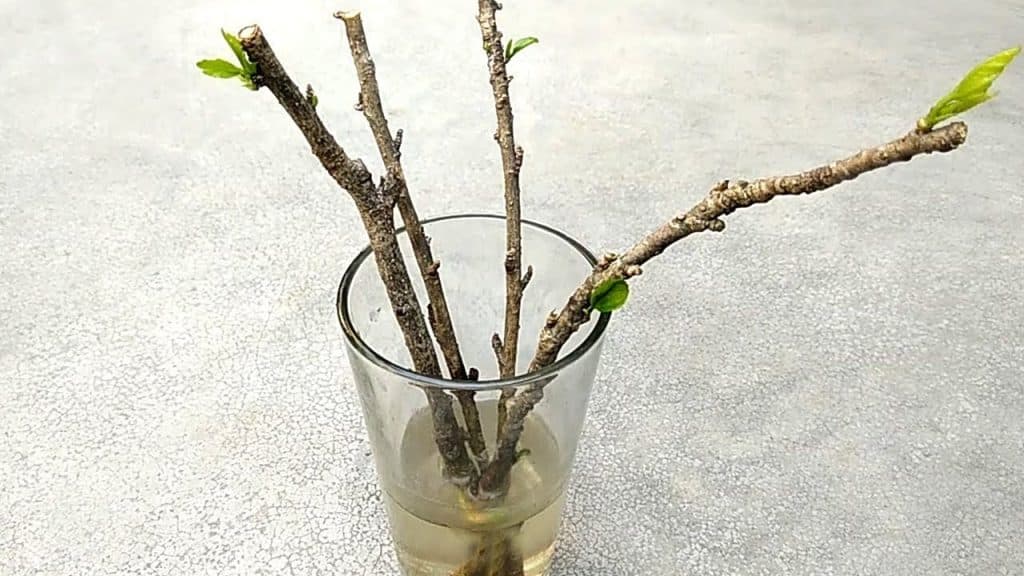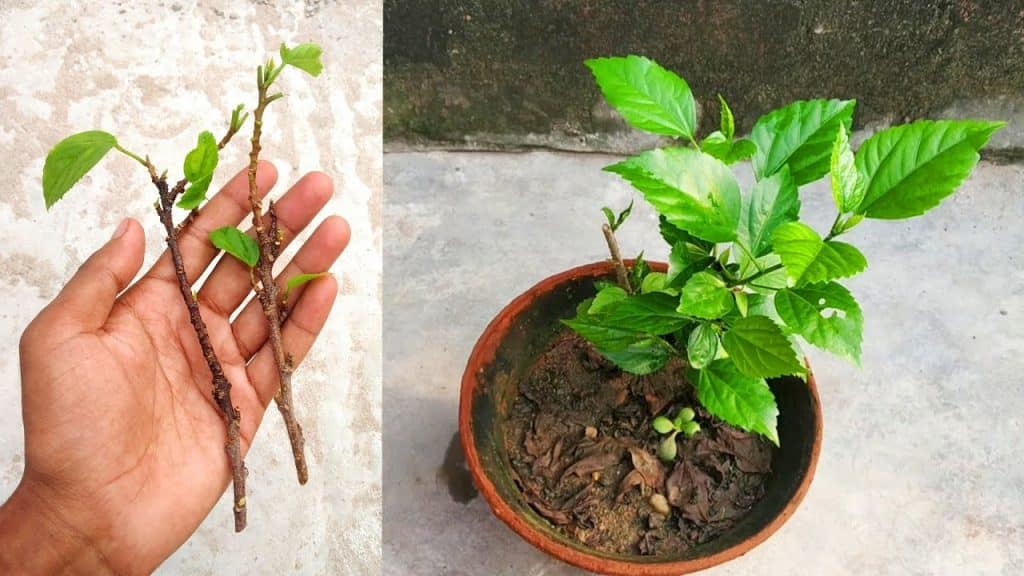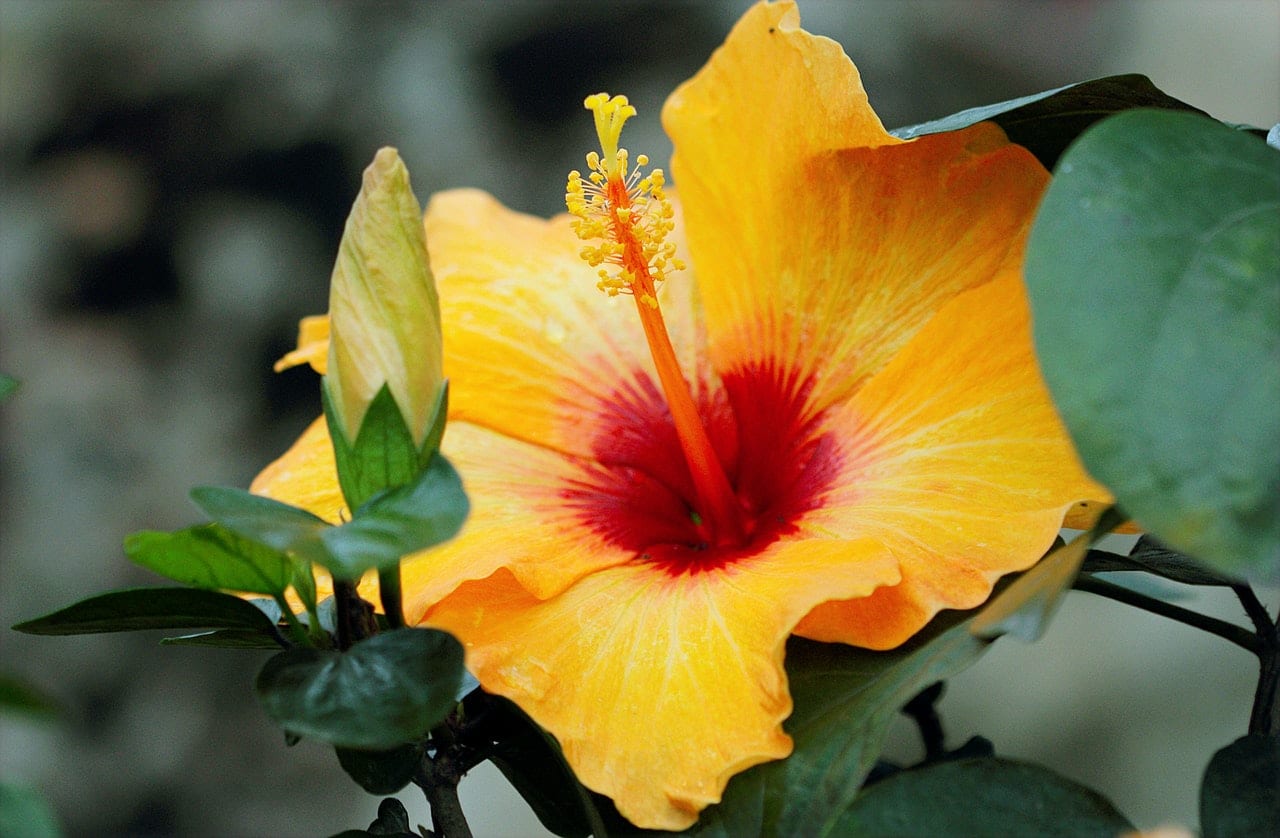Known for having some of the most unique color combinations, beautiful fragrance, and a high tolerance for heat, hibiscus is one of the best garden plants that bloom throughout the year and don’t require too much work. It is also known to have many medical benefits and is also used for hair loss treatment in some parts of South Asia.
The best and easiest way to grow hibiscus is by using a cutting. Whether it’s tropical hibiscus or hardy hibiscus, both varieties are propagated in the same way. Although, Hardy hibiscus is a bit easier to grow than tropical hibiscus, don’t worry; you can easily grow either kind, all you need is a little bit of knowledge. Here are a few tips that will help you grow hibiscus from cuttings.
Why Grow Hibiscus?

They add color to your garden
If you haven’t seen hibiscus flowers in full bloom, you will be amazed by how big, beautiful and bold they are. They have unique color combinations that make your garden look much more colorful. Plus, they can grow up to ten inches wide which just adds that extra touch of elegance to a garden.
They are low maintenance
One of the best things about hibiscus is that they are very low maintenance. You don’t really have to do too much after planting them other than keeping them hydrated during the summer. There is no need for pruning or any other maintenance work.
They can grow in hot conditions
When really hot weather strikes most flowers go out of bloom, however, that is not the case with hibiscus. They don’t mind the heat and will stay in bloom when other plants wither and fade. Always check your zones for growing conditions.
Hibiscus Can Grow in Pots
Even though hibiscus flowers look great in your garden, they look the best up close. They would look much better in pots on sunny decks, patios, porches, and balconies. Despite having big and bold flowers, hibiscus grows really well in pots and planters.
Grow Hibiscus by Using Cutting or Seeds

One of the main reasons to use cuttings for growing hibiscus is that they give you an exact copy of the parent plant when they grow up. On the other hand, hibiscus plants that are grown from seeds don’t grow true to the parent plant and often grow differently from their parent. Moreover, both hardy and tropical hibiscus are grown using cuttings whereas seeds are typically only used to grow hardy hibiscus.
People also prefer hibiscus cuttings over seeds because they speed up the growth process as there is no need for germination because you are already working with a small plant. Plus, you get higher plant mortality rates with cuttings.
- Hibiscus is a perennial plant growing in USDA zones 5 - 9. ith bright 6 - 8 inch blooms of pink, red, rose, and white and dark green foliage, this perennial is an absolute eye-catcher!
- Grown from Hibiscus seed, it is a compact, well-branched plant that is ideal for container plantings and landscape use.
- Once established, hardy Hibiscus withstands a variety of environmental conditions although it prefers a weekly deep watering.
Prices pulled from the Amazon Product Advertising API on:
Product prices and availability are accurate as of the date/time indicated and are subject to change. Any price and availability information displayed on [relevant Amazon Site(s), as applicable] at the time of purchase will apply to the purchase of this product.
How to Propagate Hibiscus Using Cuttings?
Take Your Hibiscus Cuttings
When propagating hibiscus using cuttings, you should start by taking your cuttings. Look for a strong healthy hibiscus plant that you can use as the mother plant. Choose a flower that you like because your child plant is going to be an exact copy of the mother plant. Make sure that the cuttings are taken from new growth or softwood.
For those who are new to gardening, softwood cuttings are taken from branches that haven’t fully developed and matured yet. They are pliable, often have a greenish cast, and are found in spring or early summer. It is also important that the cuttings aren’t any shorter than 4 inches and any longer than 6 inches. Also, keep in mind that all your cuttings are harvested in the early morning time because plants have the most moisture at that time.
Prepare Your Hibiscus Cutting to Grow
In order to give your cuttings the best chance to grow, you need to make sure that you prepare them properly. Start by cutting off a section of your stem at a 45-degree angle just below the bottom leaf node. Then remove all the leaves on the lower halves of the stems leaving a bare stem that will go into your potting mix.
The outer layer at the bottom of your cuttings needs to be scratched so you can expose the cambium, which is the tissue layer that helps in growing new roots. Make sure that the scratch is just an inch or 2 long and preferably on both sides.
Repeat this process for around 4-5 cuttings and place them In a glass filled with 3/4th water and immerse the stems in them. Keep the glass in a partially shaded area and wait for 4 to 7 days after which, you will start seeing new root developments. Remember to change the water at the 5th-day mark to avoid rotting and ensure better growth. After around 9 to 10 days later your cutting will be ready to be moved to a pot.
- Different Size Combo - These plastic planters indoor combines with 5 different sizes, which are suitable for planting most small and medium-sized home/office plants like orchid, snake plant, mint, cactus, aloe, to brighten up your living place.
- Excellent Drainage and Tray - These white pots for plants come with multiple drainage holes in the bottom to let exceed water easily flow out to help prolong the life of your plants, and the saucers are provided to catch excess water.
- Super Thick and Sturdy Material - Compared to common flimsy plastic pots for plants, HOMENOTE plastic flower pots are made by 3mm to 4mm super thick (from smallest to largest) sturdy polypropylene.
Prices pulled from the Amazon Product Advertising API on:
Product prices and availability are accurate as of the date/time indicated and are subject to change. Any price and availability information displayed on [relevant Amazon Site(s), as applicable] at the time of purchase will apply to the purchase of this product.
Pot Your Hibiscus Cutting

Once you have your hibiscus cuttings prepared, it is time to place them into your pots. Use well-drained soil. A 50% garden soil, 20% fine sand soil, and 30% organic compost mix will work best. Before you stick your cutting into the soil mix make sure it is thoroughly wet. Now stick your finger about 2-2.5 inches deep into the soil mix, pull it out, and place your cutting in the hole. Fill the hole back up and place a plastic bag over the cutting. It is important that the plastic doesn’t touch the cutting leaves. You can place multiple cuttings in the same pot as long as their leaves don’t touch each other.
- ✅Your potted plants deserve the best organic potting soil. Their roots can’t seek out nutrition in the ground, so you have to bring it to them.
- ✅Happy Frog Potting Soil is designed for container planting. Whether you’re growing a ficus in the dining room, a geranium on the patio, or a lemon tree on the deck, use our Potting Soil in your containers.
- ✅Nutrient rich, Happy Frog Potting Soil is highly recommended for container gardens. Ready to use right out of the bag and is pH adjusted to allow for maximum nutrient upta
Prices pulled from the Amazon Product Advertising API on:
Product prices and availability are accurate as of the date/time indicated and are subject to change. Any price and availability information displayed on [relevant Amazon Site(s), as applicable] at the time of purchase will apply to the purchase of this product.
Place your pots in a partially shaded area and make sure that the soil doesn’t dry out. It needs to stay damp until the cuttings are rooted which takes around 8 weeks. Once your cuttings have rooted you can transfer them to bigger pots or straight to your garden. After two months your cuttings will start blooming and you will get some beautiful hibiscus flowers.
Grow Hibiscus From a Cutting – Final Thoughts
Remember that tropical hibiscus has a much lower success rate as opposed to hardy hibiscus, so if you are growing hibiscus from cuttings for the first time, it is best to go with hardy hibiscus. However, if you want to grow tropical hibiscus, you should start several cuttings to increase the chances of successful rooting.










